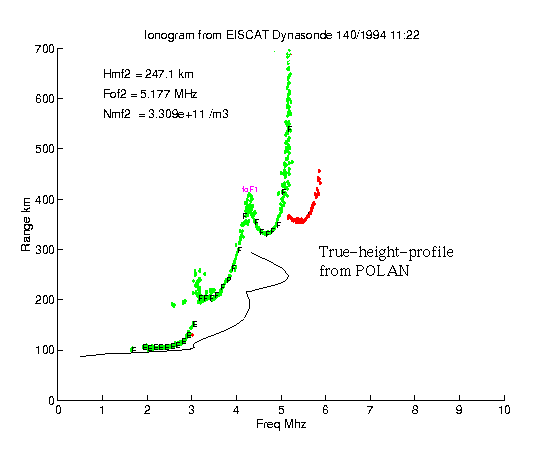
Recreating the actual plasma density profile from ionogram data is an important use of ionosonde data. Such a procedure is known as real or true- height analysis.
The time-of-flight from each echo in an ionogram, gives some indication of the height at which the radio wave was reflected. This cannot be taken as the true-height of the layer due to the effect of any ionisation in the path of the wave. Instead, this time-of-flight is referred to as the virtual height of the layer, h'. There is usually an insignificant amount of ionisation below the lowest layer, and so the true and virtual heights of this layer are often identical. True-height analysis becomes more complex however, if there is more than one layer.
All transmitted frequencies which are greater than the critical frequency of the first layer, will penetrate that layer without being reflected. Their path will however, be refracted by any overlying ionisation, and this will add to the time-of-flight. If such a wave encounters a second layer, more dense than the first, it will be reflected, and the return signal will be further delayed as it travels back through the underlying ionisation. The virtual height of the second layer will therefore be greater than the true height. The difference between true-height and virtual height is governed by the amount of ionisation along the ray path.
In order to obtain true height values, the whole ray path must be reconstructed, and this requires assumptions to be made about the electron concentration along the ray path. The resultant true-height profile is sensitive to two approximations in particular.
This is a subjective and complex task, and much work has been done to produce reliable profiles from ionogram data. As a result, there are several programs available which do this. The most stable and well tested of these programs is POLAN, written by J. E. Titheridge.
4-DEC-1997 Chris Davis